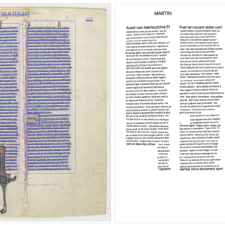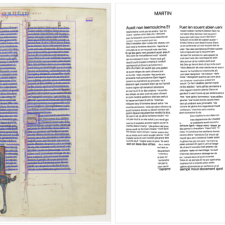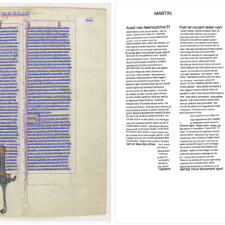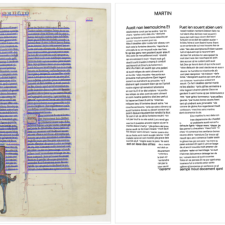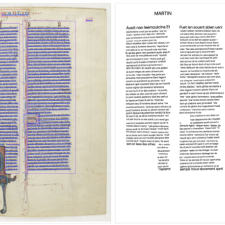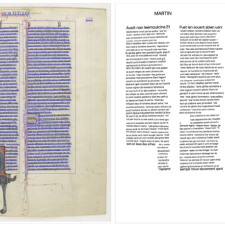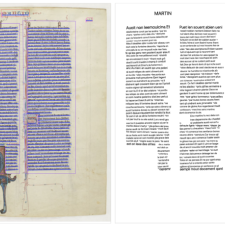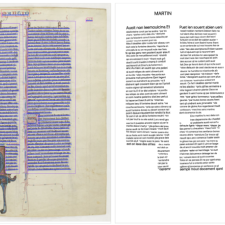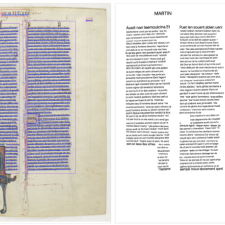Notice
1.6 : New Developments in Kraken and eScriptorium
- document 1 document 2 document 3
- niveau 1 niveau 2 niveau 3
Descriptif
par Benjamin Kiessling (PSL) et Peter Stokes (EPHE)
Recent releases of Kraken (v4) and eScriptorium introduce a number of new features that improve user experience and performance. The presentation will introduce the most important ones such as the new training library, binary datasets, and new layer types for Kraken, and annotation and text search for eScriptorium, as well as integration of both into Biblissima+. We will elaborate how these impact the use of the software in a variety of contexts, such as institutional and individual use, differences in dataset and target corpus size, etc. In addition, we will look briefly at subsystems in development such as a new algorithm for trainable reading order.
Intervention / Responsable scientifique
Thème
Dans la même collection
-
2.10 : Clôture Colloque "Documents anciens et reconnaissance automatique des écritures manuscrites"
PincheAriane2.10 : Clôture Colloque "Documents anciens et reconnaissance automatique des écritures manuscrites"
-
2.8 : Reconnaissance et extraction d’informations dans des tableaux manuscrits historiques
PincheAriane2.8 : Reconnaissance et extraction d’informations dans des tableaux manuscrits historiques
-
2.7 : HTR of Handwritten Paleographic Greek Text as a Function of Chronology
PincheAriane2.7 : HTR of Handwritten Paleographic Greek Text as a Function of Chronology
-
2.6 : EpiSearch. Recognising Ancient Inscriptions in Epigraphic Manuscripts
BoschettiFederico2.6 : EpiSearch. Recognising Ancient Inscriptions in Epigraphic Manuscripts
-
2.4 : Expérimentations pour l’analyse automatique de sources chinoises anciennes
Vidal-GorèneChahan2.4 : Expérimentations pour l’analyse automatique de sources chinoises anciennes
-
2.3 : Analyse, Reconnaissance et Indexation des manuscrits CHAM
SchweyerAnne-ValérieBurieJean-Christophe2.3 : Analyse, Reconnaissance et Indexation des manuscrits CHAM
-
2.1 : FoNDUE - A Lightweight HTR Infrastructure for Geneva
GabaySimon2.1 : FoNDUE - A Lightweight HTR Infrastructure for Geneva
-
1.3 : HTR fine tuning for medieval manuscripts models: strategies and evaluation
Torres AguilarSergioJolivetVincent1.3 : HTR fine tuning for medieval manuscripts models: strategies and evaluation
-
2.5 : Sharing HTR datasets with standardized metadata: the HTR United initiative
ChaguéAlixClériceThibault2.5 : Sharing HTR datasets with standardized metadata: the HTR United initiative
-
1.10 : Segmentation Mode for Archival Documents with Highly Complex Layout
StoeklDaniel1.10 : Segmentation Mode for Archival Documents with Highly Complex Layout
-
2.9 : Retour d’expériences sur l’utilisation comparée de plusieurs de dispositifs de transcription …
TufféryChristophe2.9 : Retour d’expériences sur l’utilisation comparée de plusieurs de dispositifs de transcription numérique d’archives de fouilles archéologiques
-
2.2 : From HTR to Critical Edition: A Semi-Automatic Pipeline
StoeklDaniel2.2 : From HTR to Critical Edition: A Semi-Automatic Pipeline


